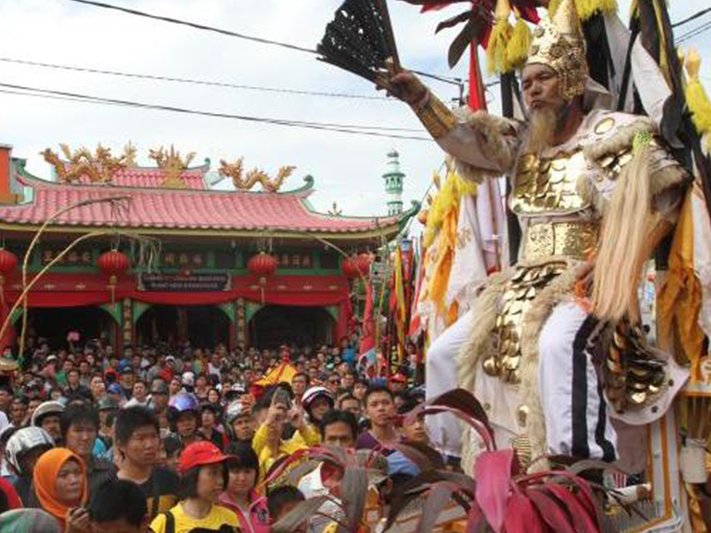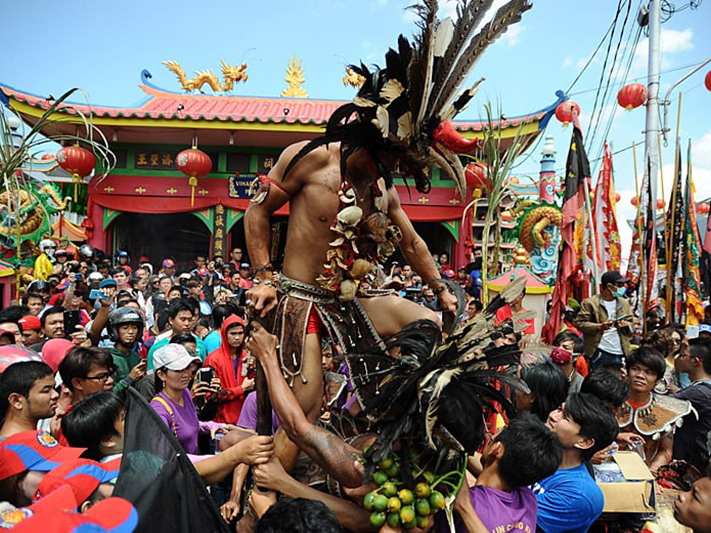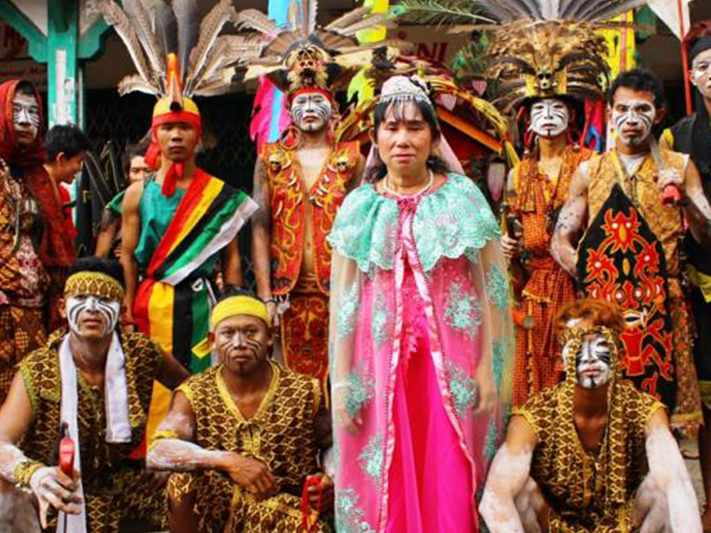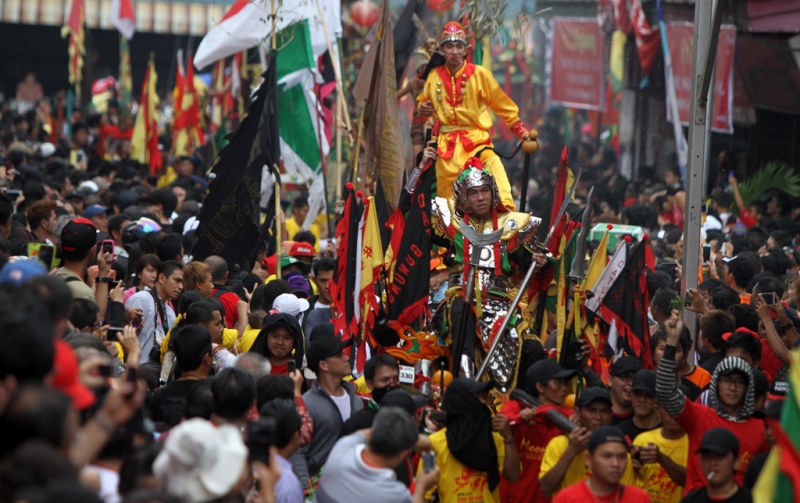Singkawang, a small city located in West Kalimantan, is home to thousands of Dayaknese and Chinese descents. Located about 145 km north of the capital city Pontianak, Singkawang or San Khew Jong in Hakka means a town in hills nearby where the sea and the river meets. The majority of its citizens are of Chinese descents, and the culture and tradition here is a mix of Chinese and Dayaknese culture. One of the Chinese rituals that has been assimilated with local culture is called Tatung. The ritual involves subjecting one's body to pain and torture, hence, it is not suitable for the squeamish and little children to watch.
History
The term Tatung derives from Hakka language, referring to a person who is believed to be possessed by gods or supernatural spirits called Lauya. As a result, people believed that all Tatungs have a special ability or power. Sometimes people come to them to ask about their future, fortune, love life, or career.

Image source: www.radoriza.com
Being a Tatung is not a choice because it runs in their blood or hereditary. Although, in some cases, a person can be a Tatung if possessed by the Lauya.
Once a year, all Tatungs in Singkawang will join a parade on Cap Go Meh day, at the end of the Chinese New Year's festivity. The festive parade is usually held two weeks (15 days) after the Chinese New Year or locally known as Imlek.

Image source: cdn2.tstatic.net
Locals believed that the Tatung parade tradition has lasted for more than 250 years. It started when Chinese people came all the way to Borneo/Kalimantan island to mine gold. They started to open an area in a very dense jungle, so they can build a village and mine gold. They also intermarried with the local Dayaknese people. However, a fever came and spread, and they believed it was caused by evil spirits. Therefore, they started to invite good spirits to help them combat the evil spirits by doing rituals and prayers. The fever was gone and they continue to do the rituals until now.

Image source: eljohnnews.com
The Tatung parade starts with a ceremony in a monastery led by a spiritual leader or a priest called "pendeta". He will call and invite the Lauya to possess the Tatungs after giving offerings to Tua Pe Kong, the god of prosperity.
The Tatungs then start to perform their pain-defying supernatural ability by stabbing themselves with sharp objects. A mediator will assist them during the performance in order to communicate with the spirits. Later on, they are paraded along the city streets while sitting on a chair of sharp knives and nails. The ritual is conducted to ged rid of evil spirits from Singkawang. This attraction is definitely not for the squeamish and little children will need parental guidance.

Image source: www.indonesia-heritage.net
All Tatungs will not get hurt if they follow the rules. They are required to have a vegetarian diet every first and 15th day of the Chinese calendar. They are also not allowed to engage in any sexual activities, as well as fasting three days prior to the parade.
In order to know whether they can join the parade or not, a day before the event they will come to a monastery to throw two wooden sticks. If all sticks show the same side, it means they can join the parade. All Tatungs must obey the rule to avoid danger during the performance.
As a sign of tolerance, while on the parade, they must stop the performance before noon in order to respect Muslims who are going to have noon prayer.
Costume and accessories
While doing the performance, The Tatungs are wearing special attires. The costume is a combination of traditional Chinese and Dayaknese attires. The clothes are usually dominated with red, gold and green colors. They also carry sharp objects as their accessories which symbolizes the supernatural ability.
Best time to see them in action
As the parade will only be held once a year on Cap Go Meh day, you need to come to Singkawang about two weeks after Chinese New Year. The Chinese New Year usually falls on February, so the best time to visit Singkawang is around January to March. This year, the parade will be held on March, 2nd.
Photo source of header banner: www.indonesia-heritage.net



















